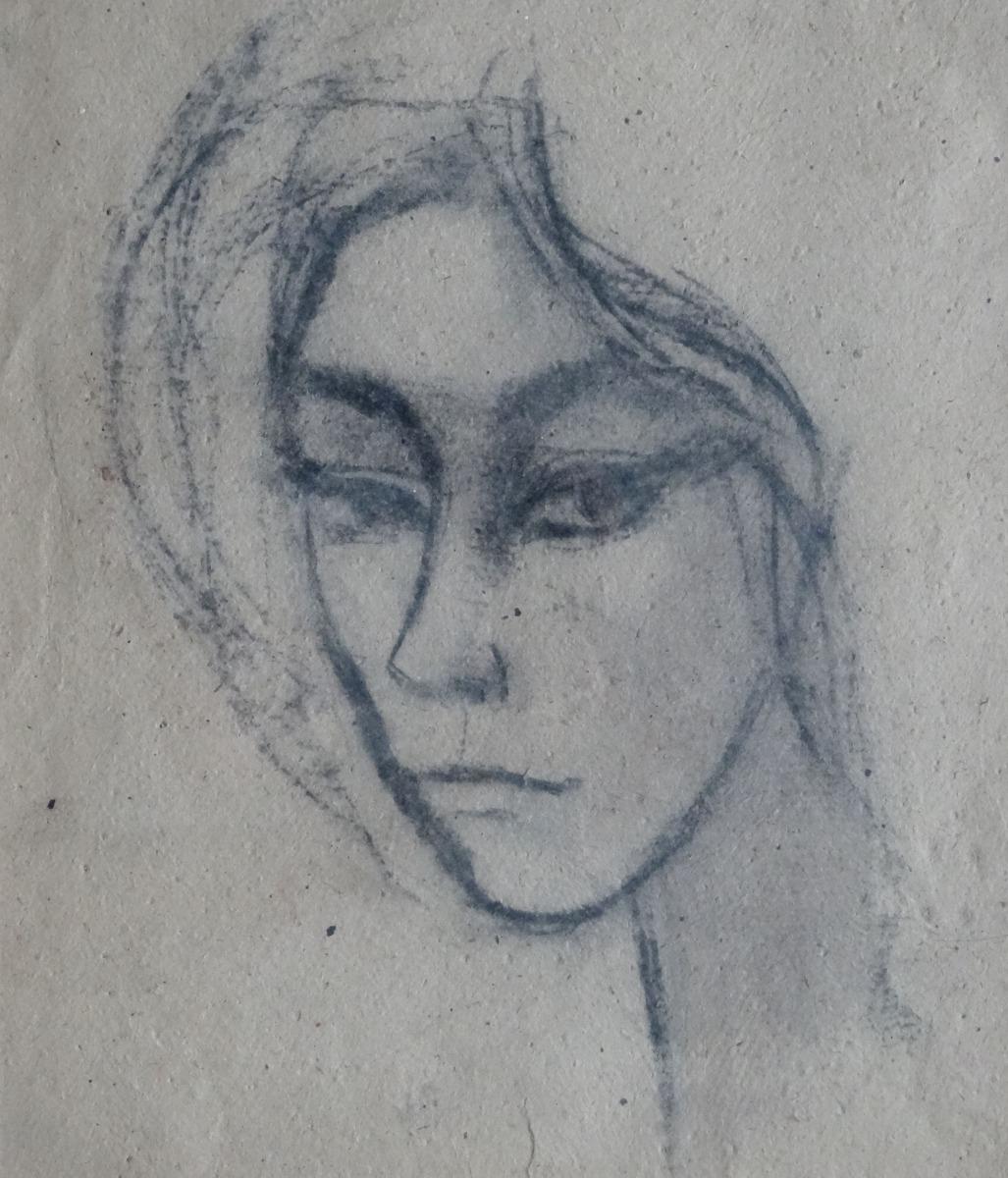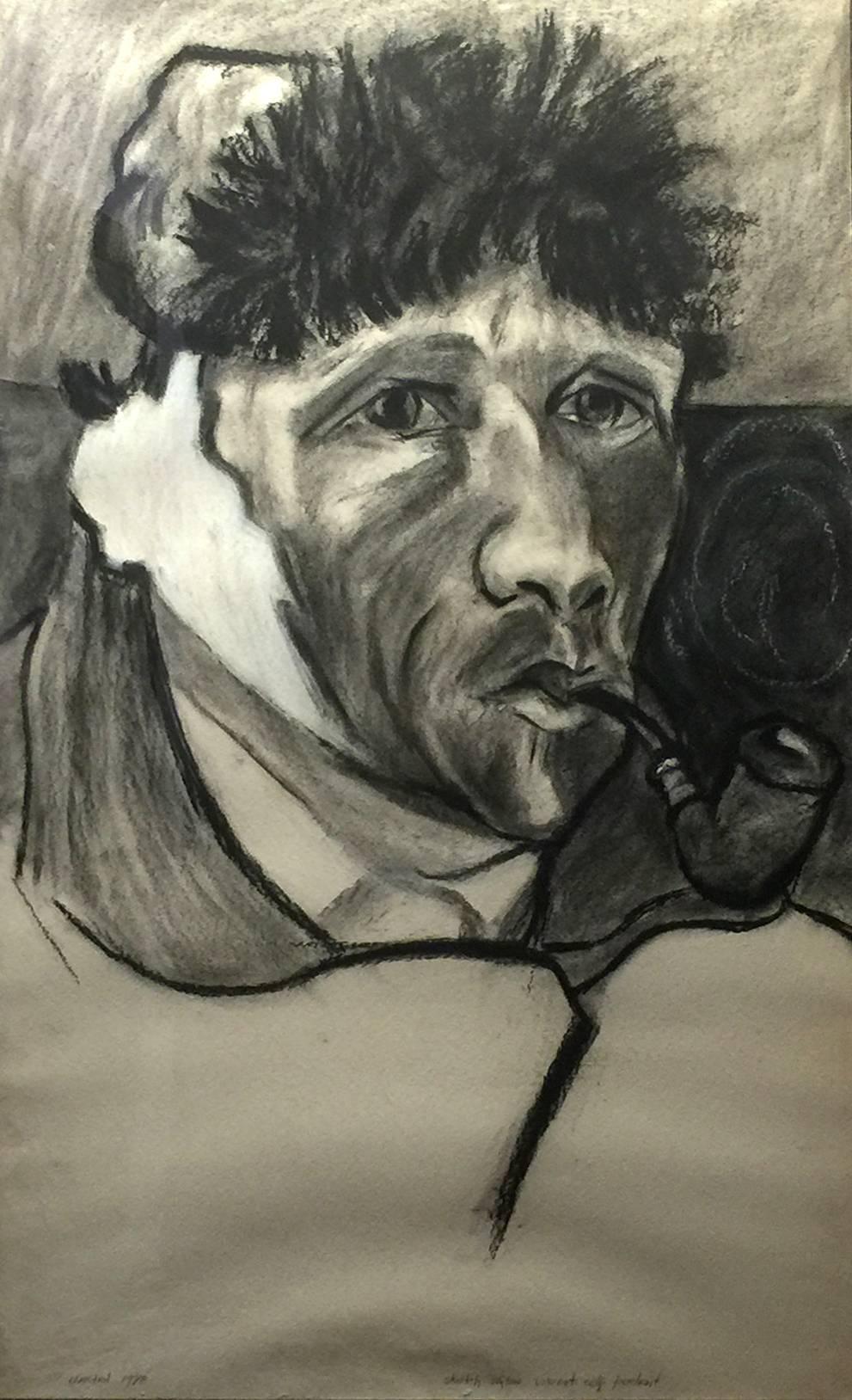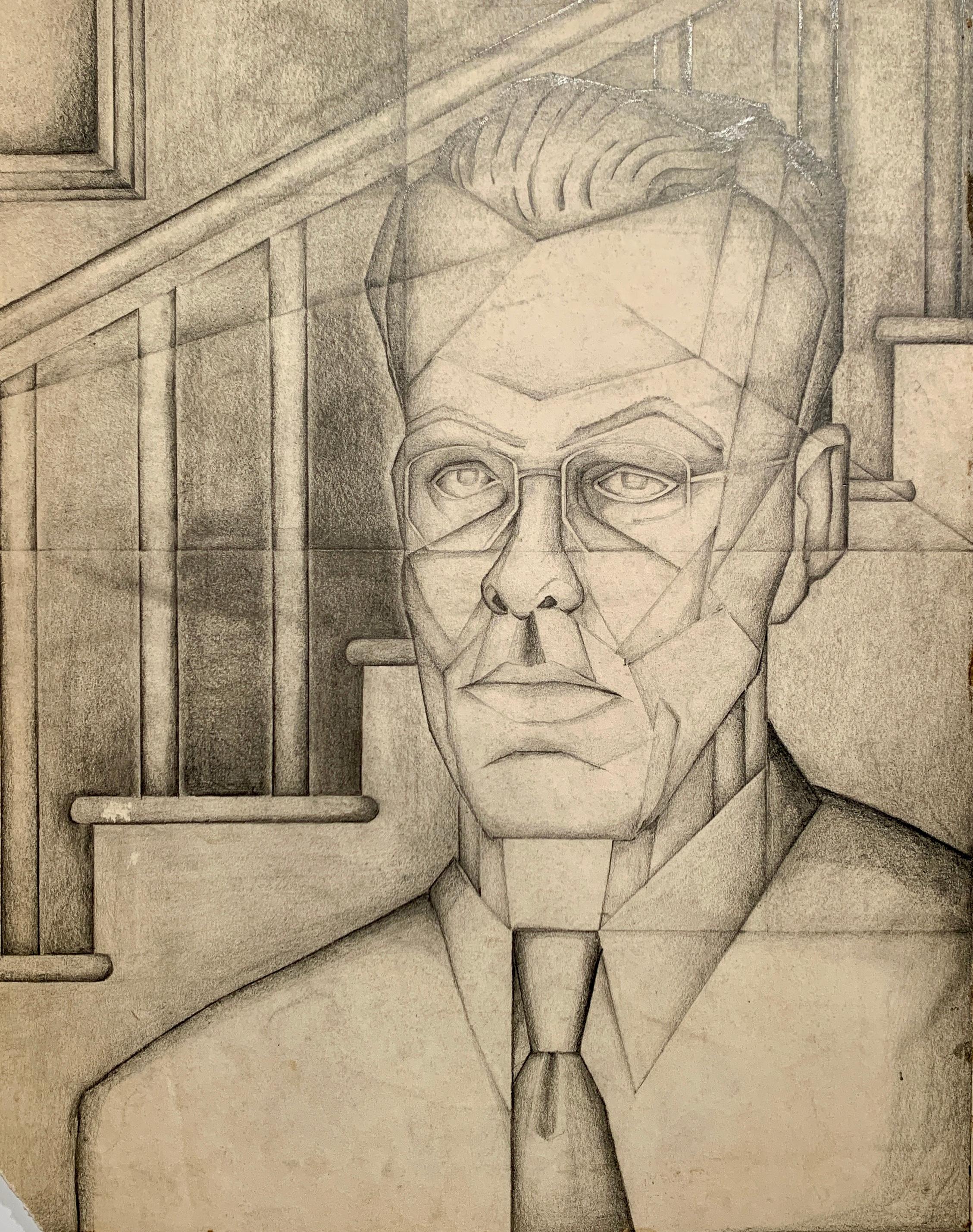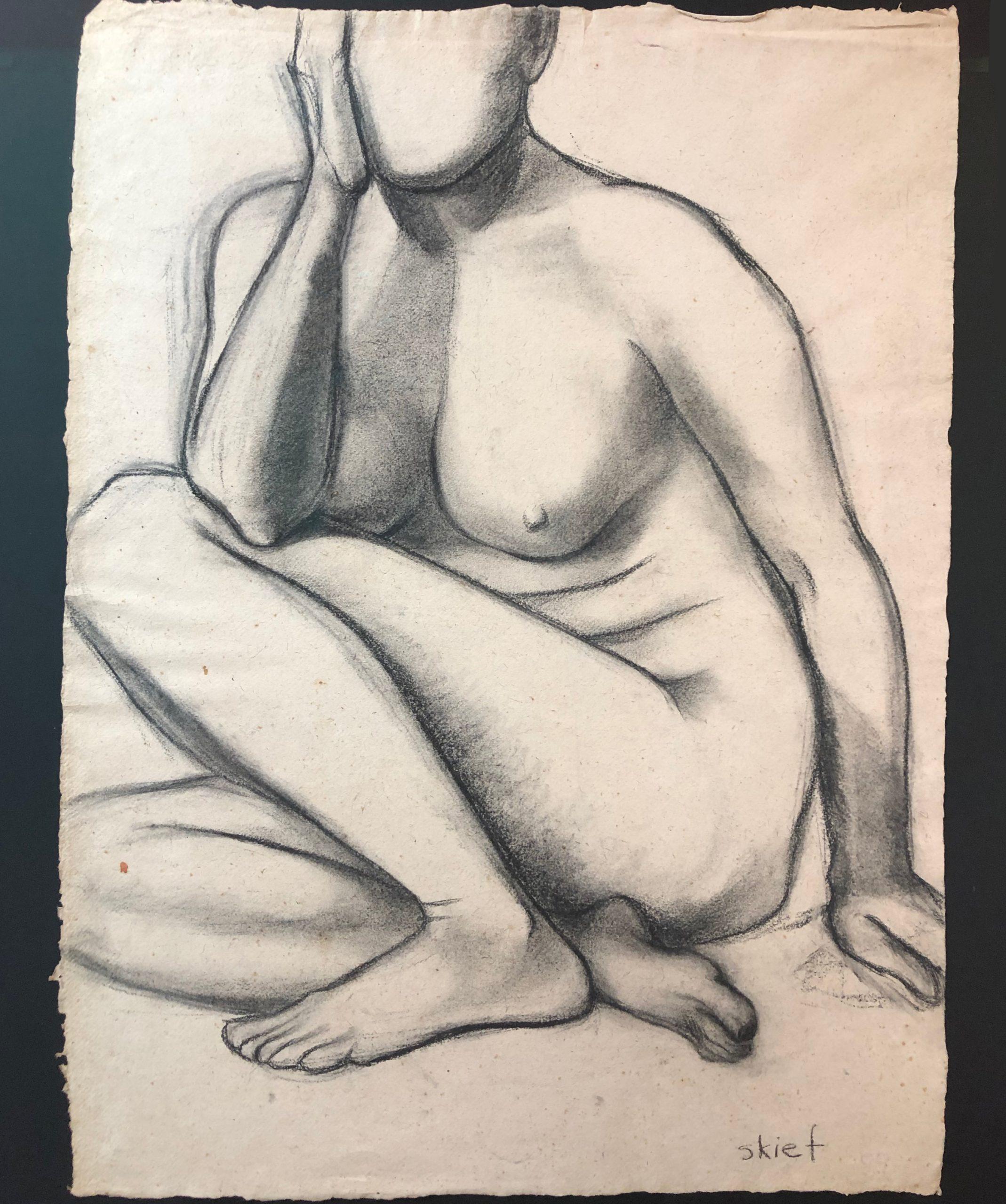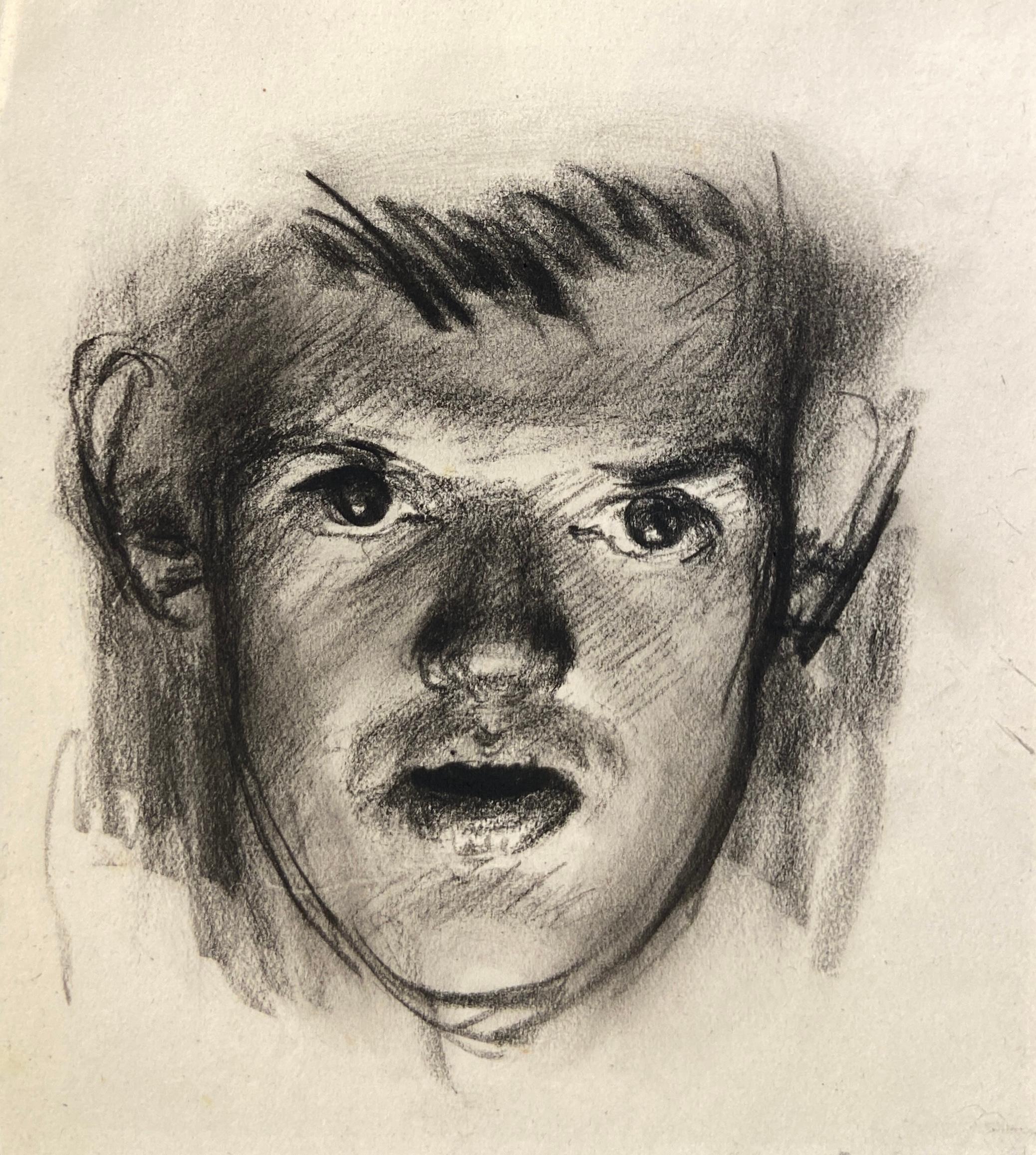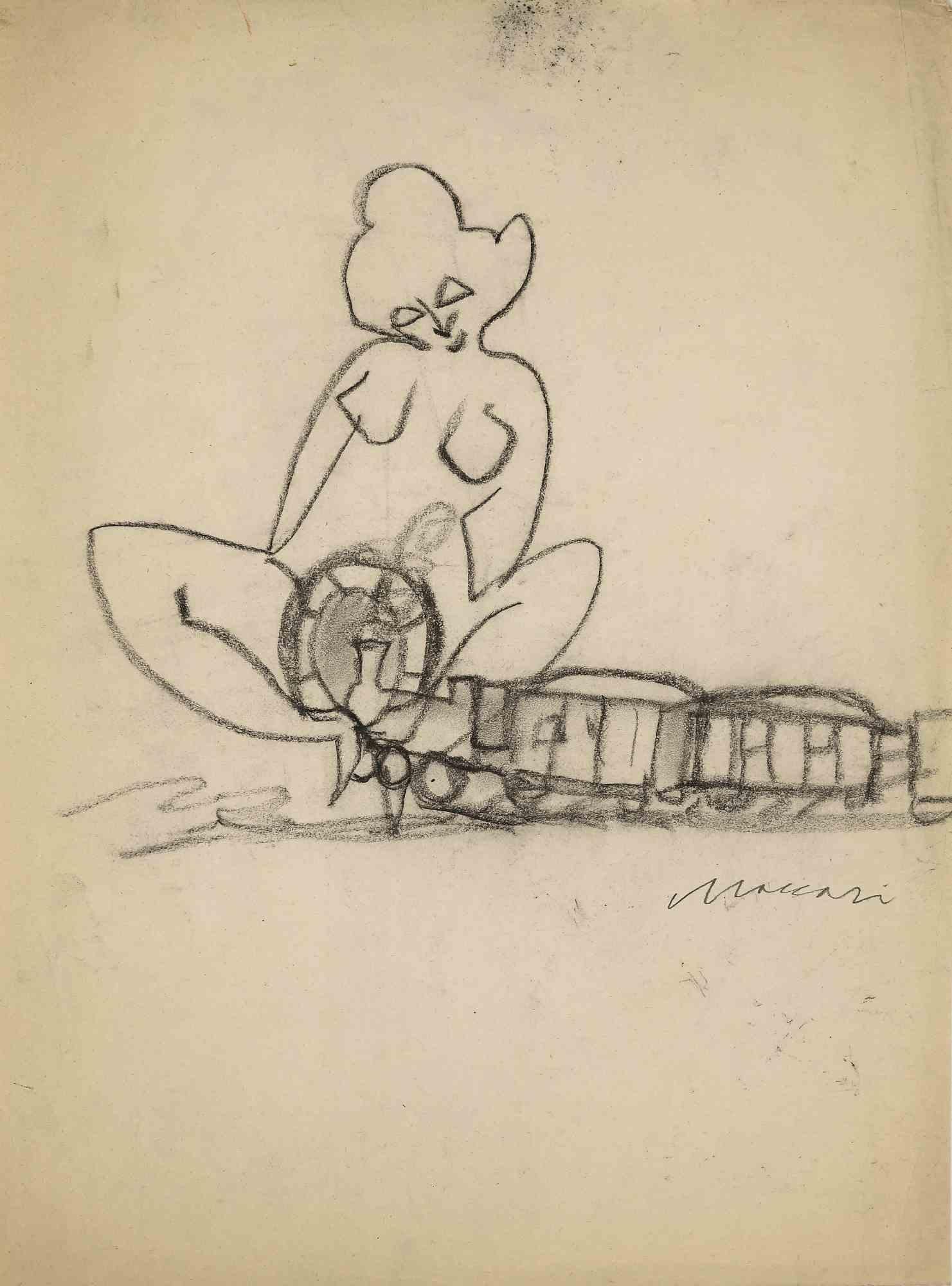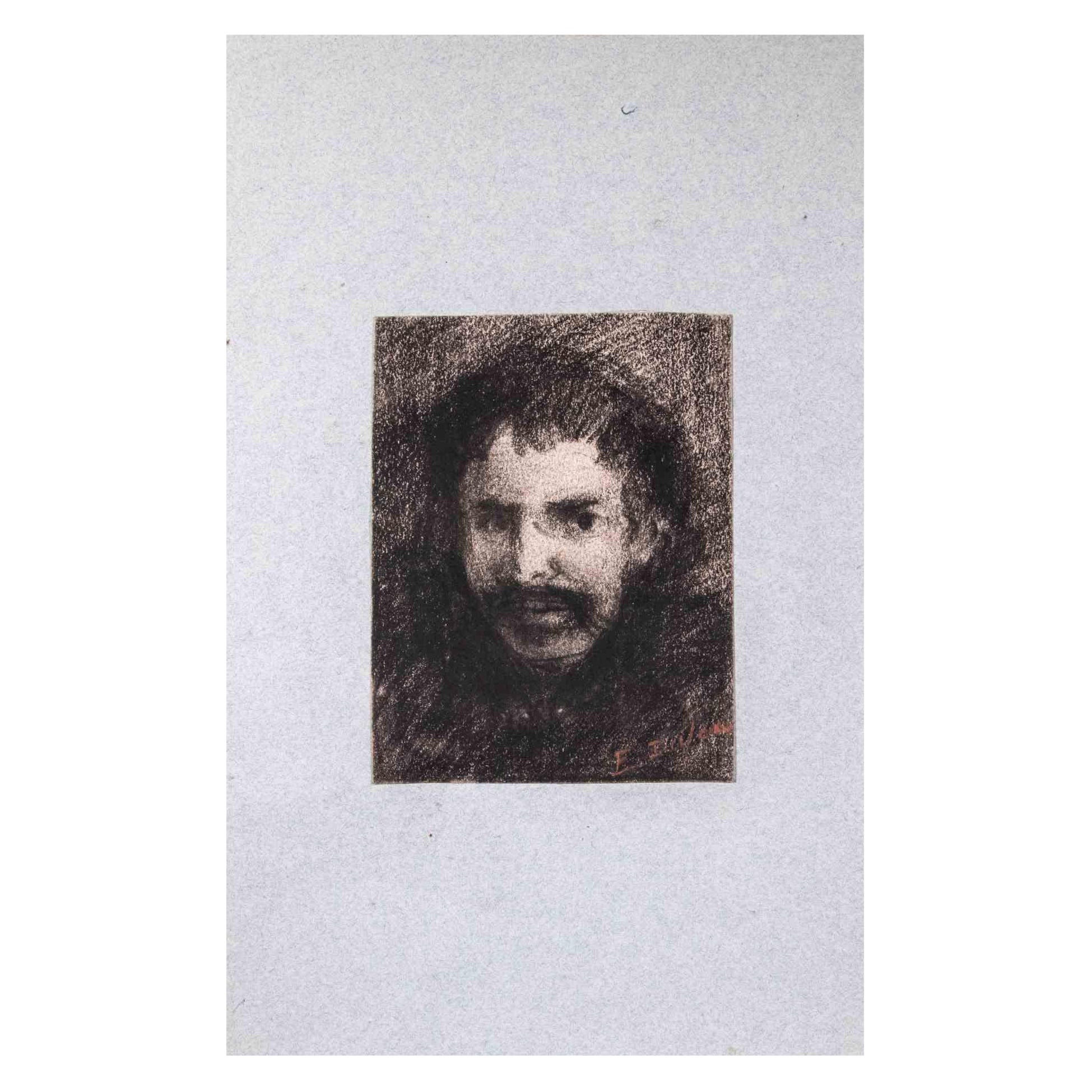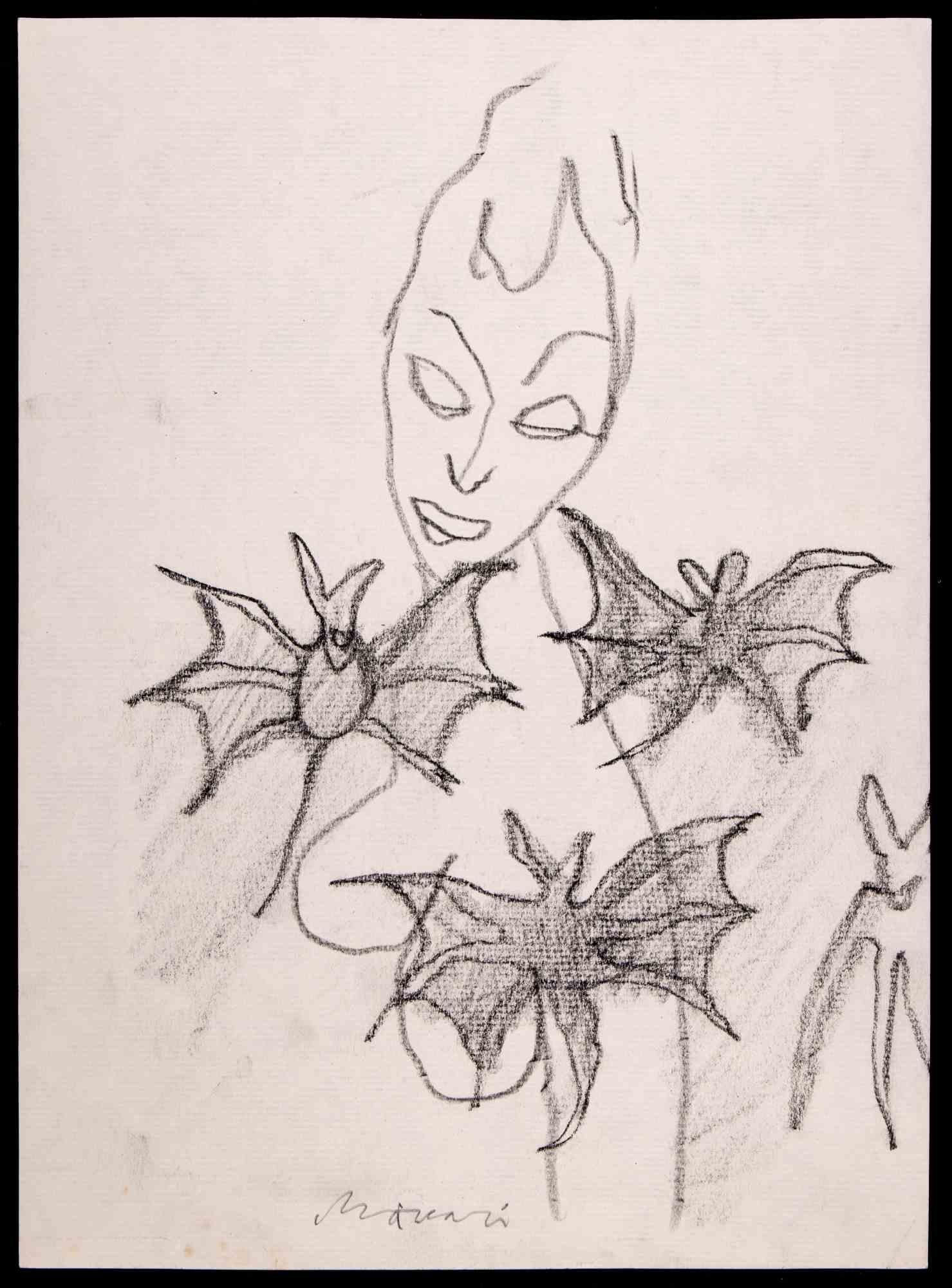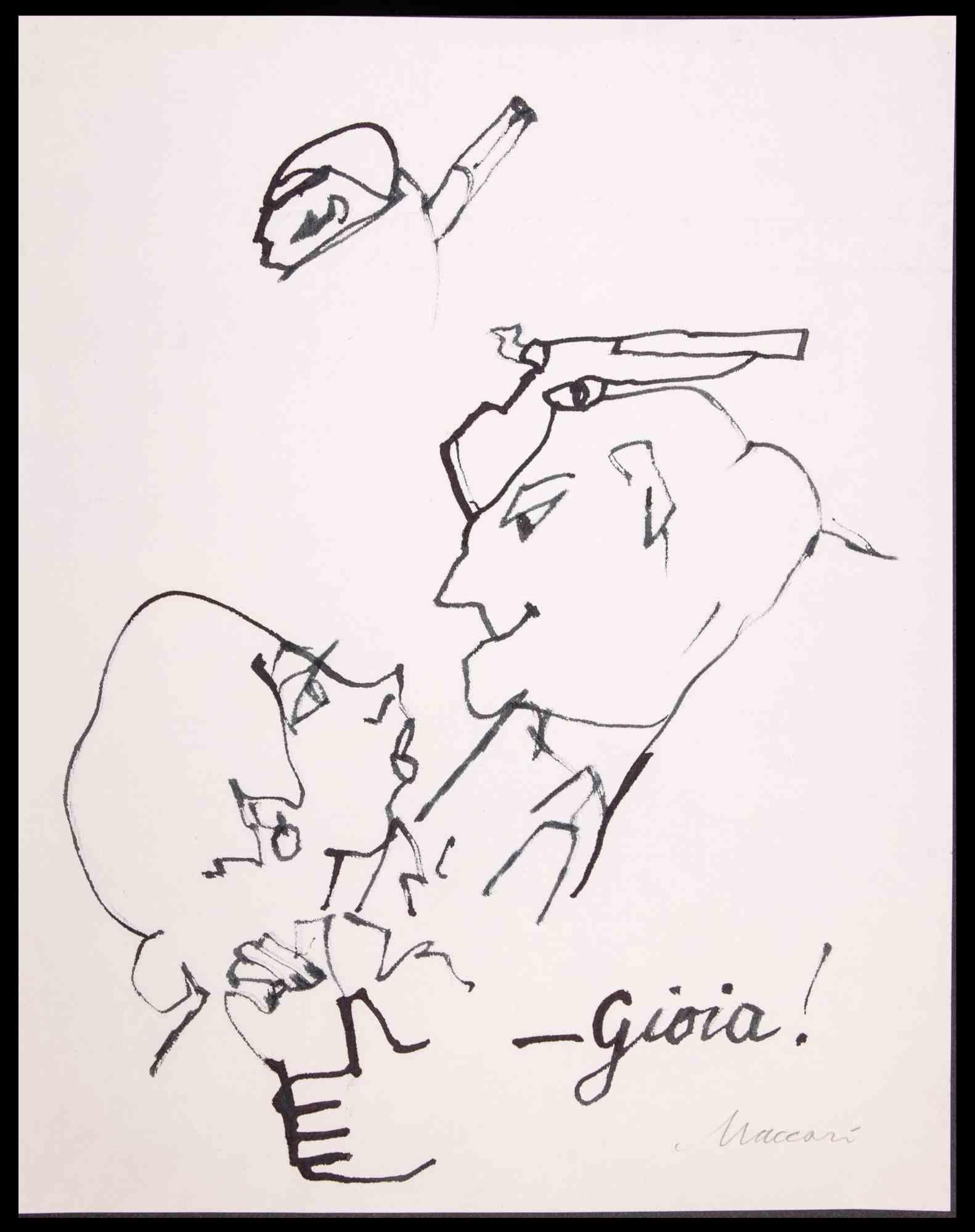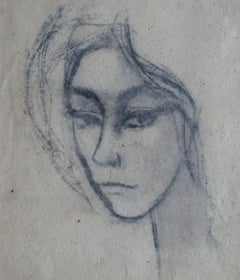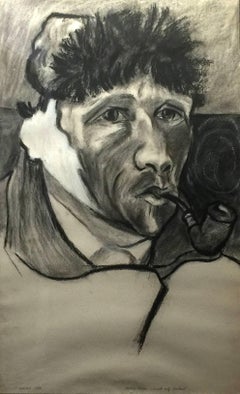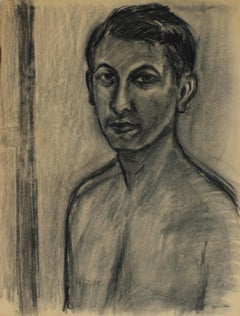
Artist Self Portrait in Charcoal, Circa 1950
View Similar Items
1 of 6
Seymour TubisArtist Self Portrait in Charcoal, Circa 1950Circa 1950s
Circa 1950s
About the Item
- Creator:Seymour Tubis (1919 - 1993, American)
- Creation Year:Circa 1950s
- Dimensions:Height: 24.75 in (62.87 cm)Width: 19 in (48.26 cm)Depth: 0.07 in (1.78 mm)
- Medium:
- Movement & Style:
- Period:
- Condition:Minor age toning and tears on edges.
- Gallery Location:San Francisco, CA
- Reference Number:Seller: 669351stDibs: LU2982892763
You May Also Like
- Portrait 1957, paper, charcoal, 36x31 cmLocated in Riga, LVPortrait 1957, paper, charcoal, 36x31 cm The focus of the portrait is a woman. Charcoal, with its rich and versatile qualities, has been utilized by the artist to capture the vario...Category
1950s Modern Portrait Drawings and Watercolors
MaterialsPaper, Charcoal
- Sketch After Vincent Self Portrait No. 3By Wes OlmstedLocated in Buffalo, NYAn original watercolor painting by Westley "Wes" Olmsted. This work is currently featured in the exhibition Man of Extremes at Benjaman Gallery in Buffalo, NY. Westley G. Olmsted (1934-2011) was a painter and sculptor. He was born in Buffalo, New York, and was a distant relative Frederick Law Olmsted...Category
1970s Modern Portrait Drawings and Watercolors
MaterialsCharcoal, Paper
- 1940s Charcoal and Pencil Portrait of a ManLocated in Arp, TXArtist Unknown "Tie and Glasses" c. 1940s Charcoal and pencil on paper 13.5"x17" image 15.5"x19" paper unframed $250 Unsigned *Listed price reflects custom framing selected by seller...Category
1940s Modern Portrait Drawings and Watercolors
MaterialsPaper, Charcoal, Carbon Pencil
- Self Portrait (original signed drawing)By John HelikerLocated in New York, NYJohn Heliker Self Portrait, 1991 Charcoal Pencil on Paper (with original Kraushaar Galleries label verso) Signed on the front bears the original KRAUSHAAR GALLERIES label on the verso on the frame Vintage metal frame included Self portrait done in charcoal pencil by distinguished American artist John Heliker. Hand signed on the front This work is framed - bears the label of the renowned KRAUSHAAR GALLERIES on the verso. Image size: 13 inches by 10 inches; Framed: 18 1/2 inches by 14 1/2 inches About John Heliker from The New York Times Obituary, 2000 (Roberta Smith) John Heliker, a painter and teacher who was a fixture of the New York art world for nearly seven decades, died on Tuesday at the Sonojee Estate, a health center in Bar Harbor, Me. He was 91 and had lived in New York during most of his career, spending summers on Cranberry Island...Category
Late 20th Century Modern Portrait Drawings and Watercolors
MaterialsCharcoal, Carbon Pencil, Paper
- Odalisque (figurative drawing, female figure, charcoal, black and white)By Susan KieferLocated in Kansas City, MOSusan Kiefer Odalisque Charcoal on paper Year: 1989 Size: 25x19in Signed by hand COA provided Ref.: 924802-1665 Framed charcoal drawing of a crouching faceless female figure on Indi...Category
1980s Modern Portrait Drawings and Watercolors
MaterialsCharcoal, Paper
$1,222 Sale Price38% Off - Rare Modernist Hungarian Rabbi Pastel Drawing Gouache Painting Judaica Art DecoBy Hugó ScheiberLocated in Surfside, FLRabbi in the synagogue at prayer wearing tallit and tefillin. Hugó Scheiber (born 29 September 1873 in Budapest – died there 7 March 1950) was a Hungarian modernist painter. Hugo Scheiber was brought from Budapest to Vienna at the age of eight where his father worked as a sign painter for the Prater Theater. At fifteen, he returned with his family to Budapest and began working during the day to help support them and attending painting classes at the School of Design in the evening, where Henrik Papp was one of his teachers. He completed his studies in 1900. His work was at first in a post-Impressionistic style but from 1910 onward showed his increasing interest in German Expressionism and Futurism. This made it of little interest to the conservative Hungarian art establishment. However, in 1915 he met the great Italian avant-gardist Filippo Tommaso Marinetti and the two painters became close friends. Marinetti invited him to join the Futurist Movement. The uniquely modernist style that he developed was, however, closer to German Expressionism than to Futurism and eventually drifted toward an international art deco manner similar to Erté's. In 1919, he and his friend Béla Kádar held an exhibition at the Hevesy Salon in Vienna. It was a great success and at last caused the Budapest Art Museum to acquire some of Scheiber's drawings. Encouraged, Scheiber came back to live in Vienna in 1920. A turning point in Scheiber's career came a year later, when Herwarth Walden, founder of Germany's leading avant-garde periodical, Der Sturm, and of the Sturm Gallery in Berlin, became interested in Scheiber's work. Scheiber moved to Berlin in 1922, and his paintings soon appeared regularly in Walden's magazine and elsewhere. Exhibitions of his work followed in London, Rome, La Paz, and New York. Scheiber's move to Germany coincided with a significant exodus of Hungarian artists to Berlin, including Laszlo Moholy-Nagy and Sandor Bortnyik. There had been a major split in ideology among the Hungarian avant-garde. The Constructivist and leader of the Hungarian avantgarde, Lajos Kassák (painted by Hugó Scheiber in 1930) believed that art should relate to all the needs of contemporary humankind. Thus he refused to compromise the purity of his style to reflect the demands of either the ruling class or socialists and communists. The other camp believed that an artist should be a figurehead for social and political change. The fall out and factions that resulted from this politicisation resulted in most of the Hungarian avant gardists leaving Vienna for Berlin. Hungarian émigrés made up one of the largest minority groups in the German capital and the influx of their painters had a significant effect on Hungarian and international art. Another turning point of Scheiber's career came in 1926, with the New York exhibition of the Société Anonyme, organized by Katherine Dreier. Scheiber and other important avant garde artists from more than twenty-three countries were represented. In 1933, Scheiber was invited by Marinetti to participate in the great meeting of the Futurists held in Rome in late April 1933, Mostra Nazionale d’Arte Futurista where he was received with great enthusiasm. Gradually, the Hungarian artists began to return home, particularly with the rise of Nazism in Germany. Kádar went back from Berlin in about 1932 and Scheiber followed in 1934. He was then at the peak of his powers and had a special flair in depicting café and cabaret life in vivid colors, sturdily abstracted forms and spontaneous brush strokes. Scheiber depicted cosmopolitan modern life using stylized shapes and expressive colors. His preferred subjects were cabaret and street scenes, jazz musicians, flappers, and a series of self-portraits (usually with a cigar). his principal media being gouache and oil. He was a member of the prestigious New Society of Artists (KUT—Képzőművészek Új Társasága)and seems to have weathered Hungary's post–World War II transition to state-communism without difficulty. He continued to be well regarded, eventually even receiving the posthumous honor of having one of his images used for a Russian Soviet postage stamp (see image above). Hugó Scheiber died in Budapest in 1950. Paintings by Hugó Scheiber form part of permanent museum collections in Budapest (Hungarian National Museum), Pecs (Jannus Pannonius Museum), Vienna, New York, Bern and elsewhere. His work has also been shown in many important exhibitions, including: "The Nell Walden Collection," Kunsthaus Zürich (1945) "Collection of the Société Anonyme," Yale University Art Gallery, New Haven, Connecticut (1950) "Hugó Scheiber: A Commemorative Exhibition," Hungarian National Museum, Budapest (1964) "Ungarische Avantgarde," Galleria del Levante, Munich (1971) "Paris-Berlin 1900-1930," Centre Georges Pompidou, Paris (1978) "L’Art en Hongrie, 1905-1920," Musée d’Art et l’Industrie, Saint-Etienne (1980) "Ungarische Avantgarde in der Weimarer Republik," Marburg (1986) "Modernizmus," Eresz & Maklary Gallery, Budapest (2006) "Hugó Scheiber & Béla Kádár," Galerie le Minotaure, Paris and Tel Aviv (2007) Hugó Scheiber's paintings continue to be regularly sold at Sotheby's, Christie's, Gillen's Arts (London), Papillon Gallery (Los Angeles) and other auction houses. He was included in the exhibition The Art Of Modern Hungary 1931 and other exhibitions along with Vilmos Novak Aba, Count Julius Batthyany, Pal Bor, Bela Buky, Denes Csanky, Istvan Csok, Bela Czobel, Peter Di Gabor, Bela Ivanyi Grunwald, Baron Ferenc Hatvany, Lipot Herman, Odon Marffy, C. Pal Molnar...Category
Early 20th Century Modern Figurative Paintings
MaterialsPaper, Charcoal, Pastel, Watercolor, Gouache
Recently Viewed
View AllMore Ways To Browse
Artists From 1950
Artist Self Portrait
American Artists 1950
Charcoal Brown
Santa Fe Artist
American Indian Portraits
Charcoal Ships
American Indian Portrait Painting
Vintage Indian Portraits
Mid Century Modern Chair Charcoal
Mid Century Charcoal Portrait
Vintage Indian Stamps
1919 Charcoal
Santa Fe Chairs
Art In Life
New Collection
This I
In Love
